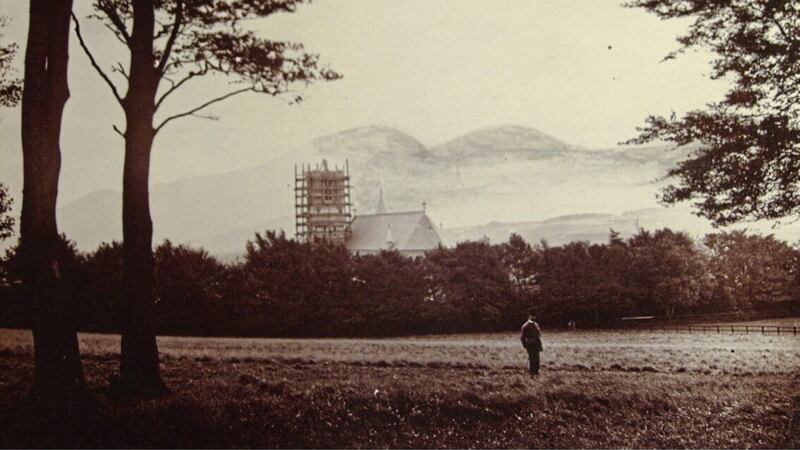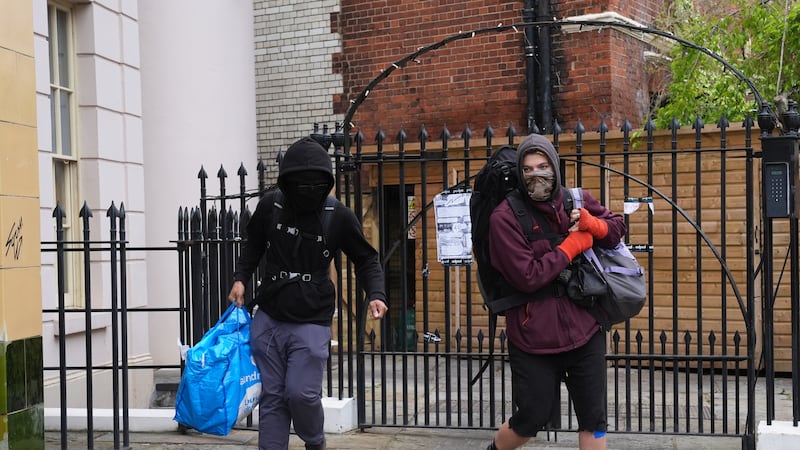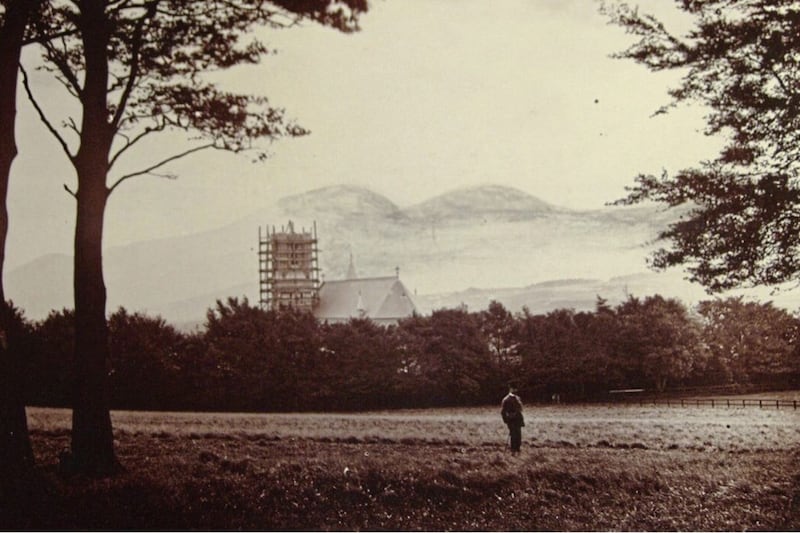A NEW book from The Kilmegan and Maghera Historical Group which launched before Christmas doesn't fall into the category of a light read, but it has proved so popular that 700 copies sold out almost immediately it came back from the printers.
In fact, as coffee table tomes go, the History of Kilmegan and Surrounding Area is a definite heavyweight, both in the depth of the detail it contains (17 townlands and two towns, Castlewellan and Dundrum, are included) and the weight of its pages which run to over 500, each offering a fascinating snapshot of life in this quiet Co Down hinterland from ancient times up to the present day.
Painstakingly compiled by members of the historical society founded in 2017, it is the result of countless hours spent chatting to elderly residents and poring over old stories, poems, historical facts, myths and legends, and photographs – not to mention endless debates over what to keep in and what to leave out.
"In the end, we didn't want to leave much out and so, what started as a 250-page project, quickly increased in size and number," says Leo King, chairman of the history group. "The book was two years in the making and I think, by the end, it took over all our lives. It just snowballed and snowballed, but the feedback has been amazing and we have been so encouraged by the level of interest shown both by people who live in the Kilmegan area, and also outside it."
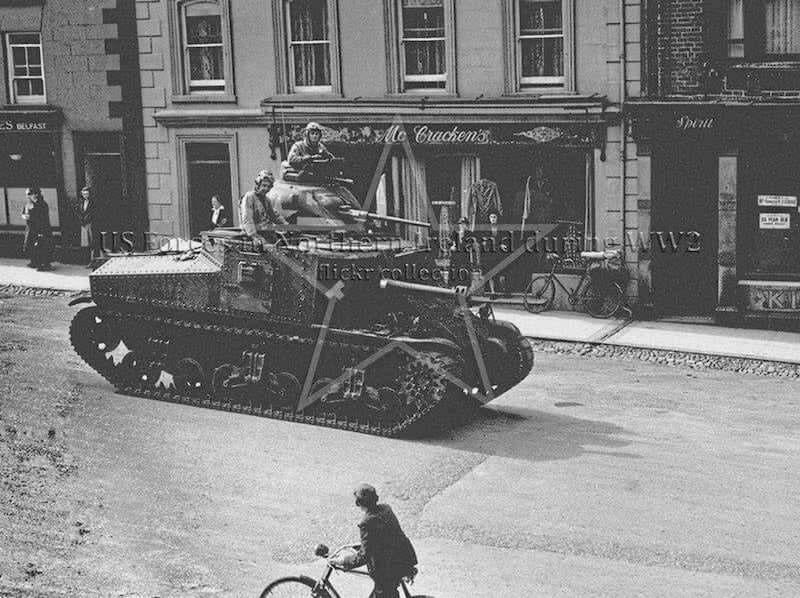
Leo, along with group vice chairman Kieran Heenan, came up with the idea for a comprehensive book as a means of documenting important local history for future generations, particularly as members of the older population passed away – and their stories with them.
Long hours were spent, deep into the night, hearing first-hand accounts on everything from the romance of landmarks such as Burren Rock to compiling the often-times topsy-turvy history of local churches and primary schools and documenting the rise and fall of the landed aristocracy – all of which is interwoven with the various political upheavals and developments which impacted – for good or bad – the daily lives of those living in the area.
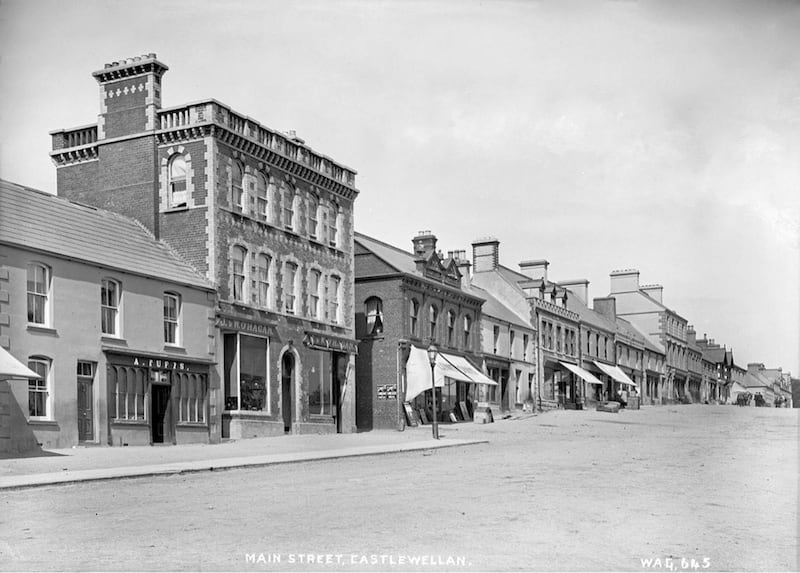
A visit by the future King George V to Newcastle and Castlewellan in 1897 is also recorded, against the interesting backdrop a functioning Newcastle Railway Station which was decorated to welcome a specially commissioned royal train carrying the Duke of York (later to become King George V) on the diamond jubilee year of his mother, Queen Victoria.
"This new book contains a lot of information already featured in smaller history books on the Kilmegan area," says Leo, "but we wanted to put everything together in one big book, along with some new information we gathered up, a lot of which came from interviews with elderly residents who were keen to have their memories put down on paper.
"They had stories that have been passed down over the years, but were worried these would soon be forgotten when the last generation died out, so we had some fascinating insights into life down through the ages. There are many great stories in this new book, but I think one of my personal favourites is one of a whiskey distillery which operated in Castlewellan in the 1880s.
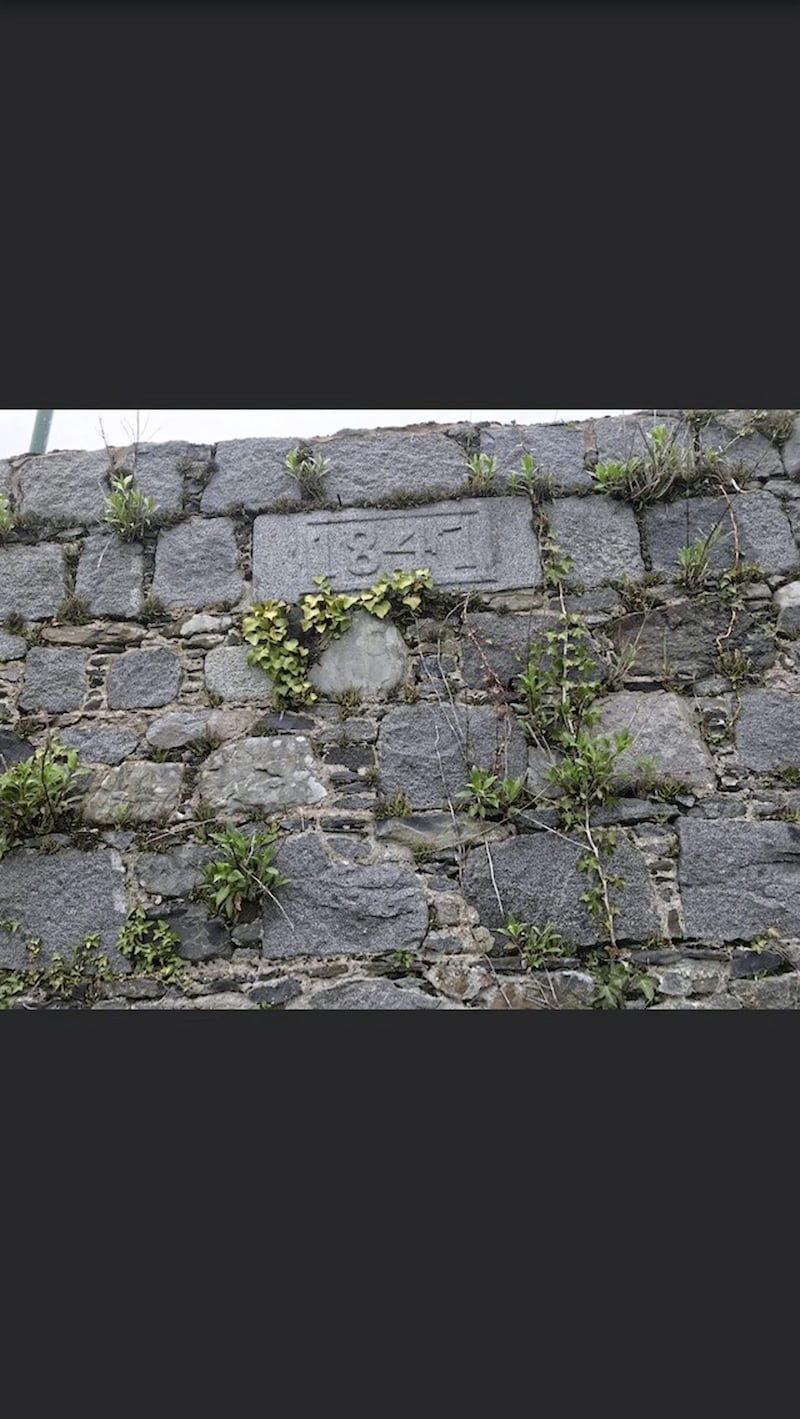
"Two brothers from the wealthy Mooney family blended and bottled their own whiskey called Donard Dew. It was famous at the time and was distributed all over the world. Unfortunately, we didn't come across any old bottles which had been preserved when we were doing our research!"
The Mooneys, it seems, were regarded as "fair and considerate" landlords who treated their tenants kindly (even reducing their rent on occasion) – a virtue not always evident in the major landlords of the day, according to fellow historian Ciaran Crilly, the main author of A History of Kilmegan and Surrounding Area.
"I found the landlord period particularly interesting," Ciaran says. "There were three or four major landlords in this area – the Downshires and Rodens being two big names. They controlled every aspect of people's lives, whether as magistrate, or as as someone who could just put you off the land.
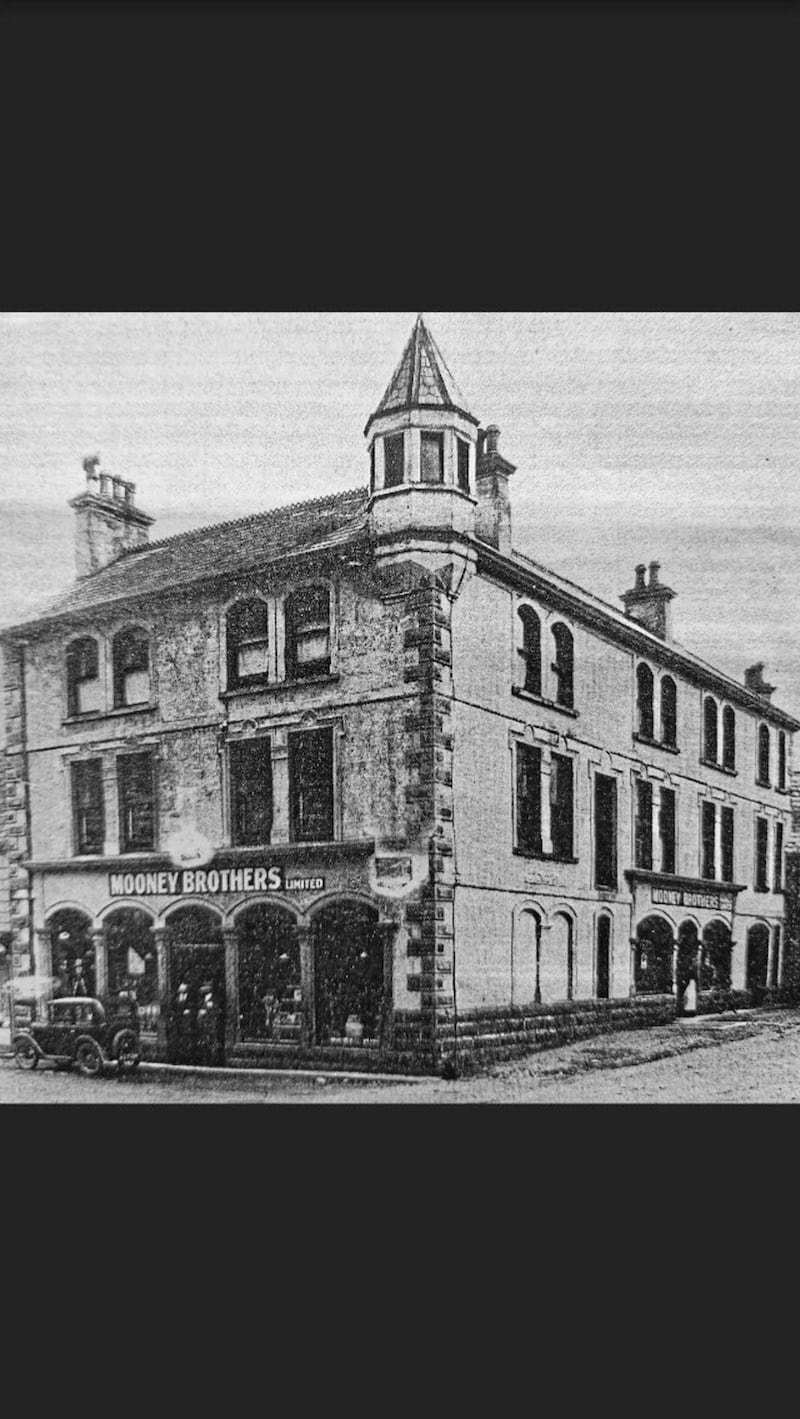
"They lived in big houses, big castles and lived totally detached from the ordinary people who often struggled to make a living. The estate was always their first priority, but the [Kilmegan] landlords weren't as bad as the absentee ones and certainly not as bad as landlords from elsewhere.
"But the sad thing for me and something that seems to run through the book [which covers events from the first settlers, to the kings of Ireland, the Plantation, rebellion and Famine, right up to the more recent Troubles], is the existence of sectarian tensions which are evident as far back as we could trace.
"In the 'Dolly's Brae Affray' for instance, you have what is essentially the first disputed parade. We devoted an entire chapter to this conflict because of the impact and loss of life it brought to the area."
The notorious incident came about after an Orange Order parade on the Twelfth of July 1849 attempted to pass through Dolly's Brae, outside Castlewellan, on a homeward march from Newcastle, although the book's authors note that the "clash or affray", occurred nearly a mile away on the west side of Magheramayo mountain and that the "murders committed and houses burned or partly destroyed" were in this vicinity and not near "the hill known as Dolly's Brae".
But the book is also a record of important social change, of the role of flax growers, of families impacted by famine and emigration and how the coming of the railways changed the economic landscape and brought the first tourists to seaside towns like Newcastle.
"Kilmegan and surrounding areas, really, are a microcosm of the wider political and social story at the time and the thing that people like about this book is the fact there is no beginning, as such, and no end," adds Ciaran. "You can just dip in and out of it – and, hopefully, learn something new each time."
:: Sales of History of Kilmegan and Surrounding Area are helping support the Children's Heartbeat Trust. Anyone interested in buying a copy – second print run permitting – should email Leo King (leo7616@gmail.com) or visit the Kilmegan Maghera Facebook page.
